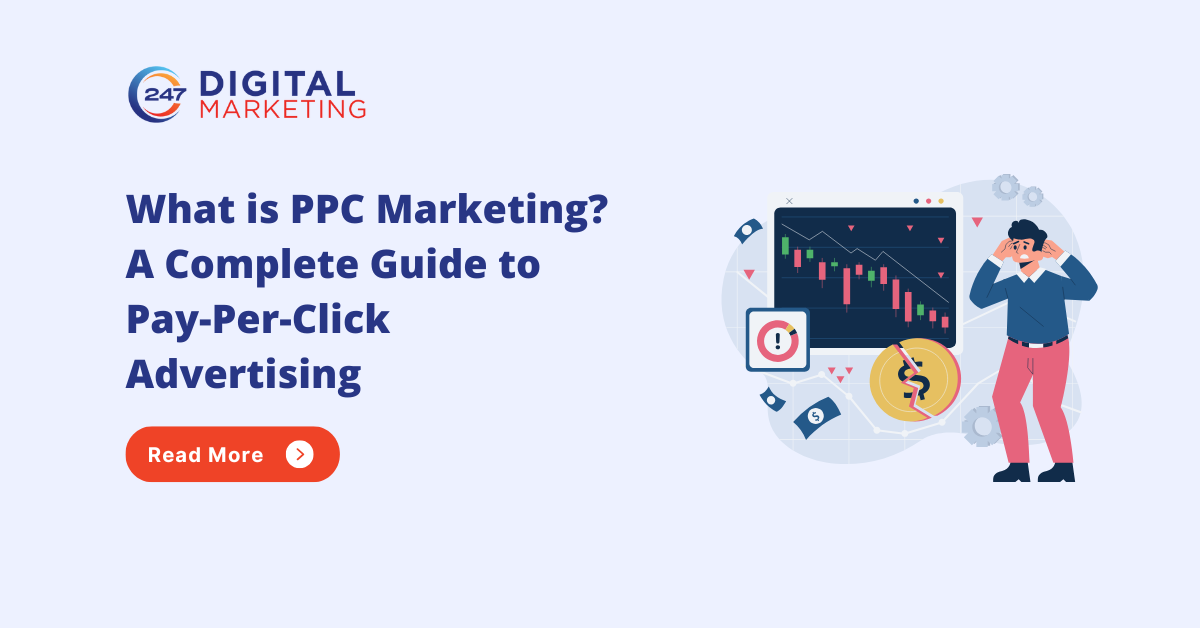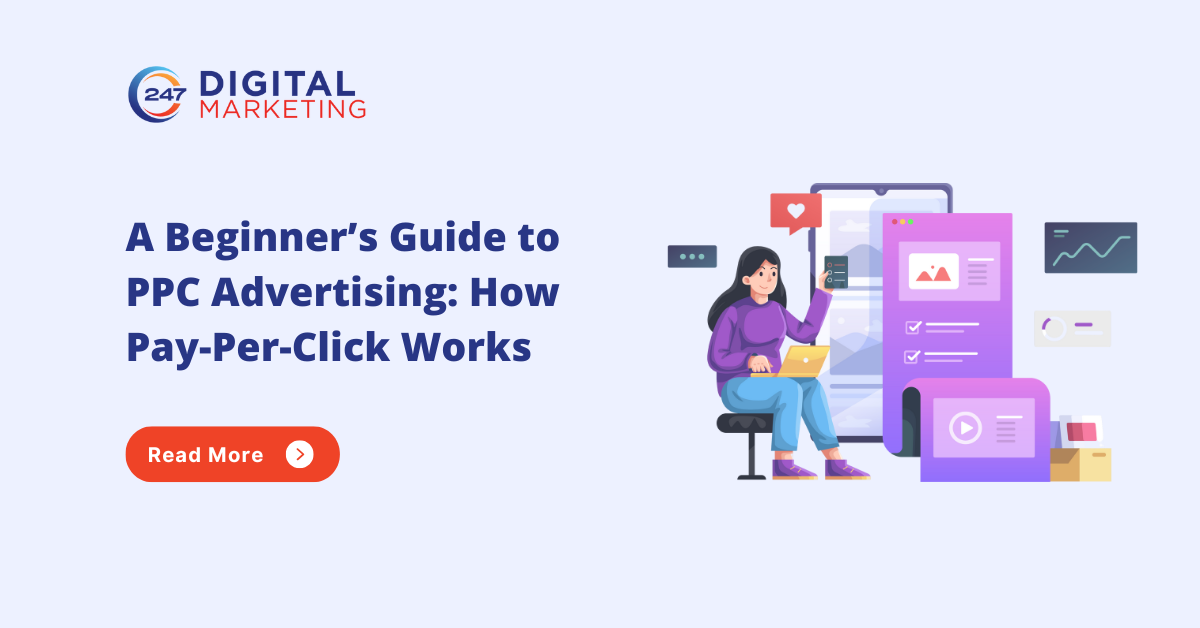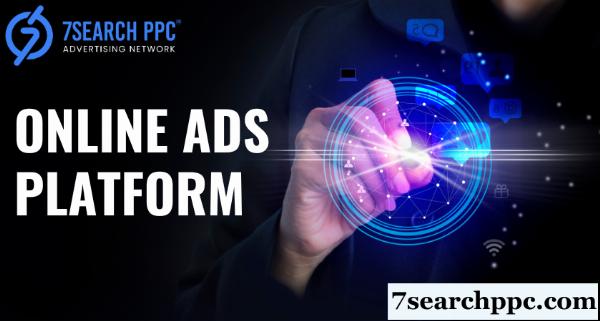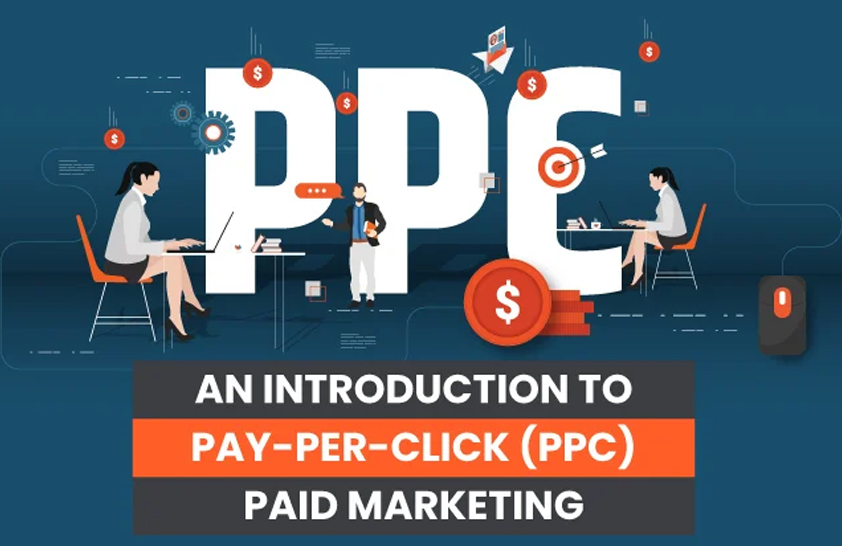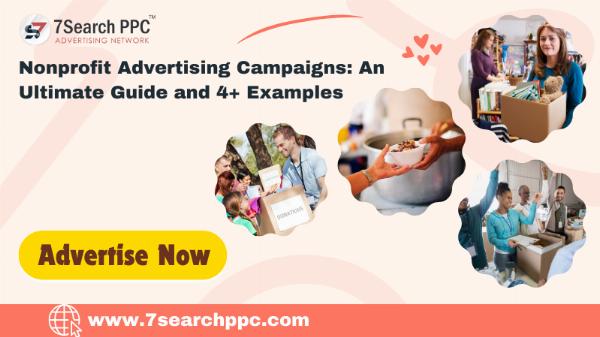PPC for Beginners - Your Step-by-Step Guide to Mastering Pay-Per-Click

Strong 8k brings an ultra-HD IPTV experience to your living room and your pocket.
Guide yourself through the intricacies of Pay-Per-Click advertising with our comprehensive step-by-step manual. If you're new to PPC, this beginner-friendly guide will walk you through the basics, from understanding keywords to creating effective ad campaigns. By the end of this tutorial, you'll have the knowledge and confidence to navigate the world of PPC like a pro, yielding maximum results for your business.
Key Takeaways:
- Keyword Research: Conduct thorough keyword research to identify relevant keywords for your PPC campaigns.
- Ad Copywriting: Write compelling ad copy that is relevant to your keywords and enticing to potential customers.
- Tracking and Optimization: Continuously monitor and optimize your PPC campaigns based on performance data to improve results over time.
Understanding PPC Basics
What is Pay-Per-Click Advertising?
Pay-Per-Click (PPC) advertising is a digital marketing strategy where advertisers pay a fee each time their ad is clicked. It's a way of buying visits to your site rather than attempting to earn those visits organically. PPC is commonly associated with search engines like Google and Bing, where advertisers bid on keywords related to their target market. When a user searches for those keywords, the advertiser's ad may appear at the top or bottom of the search results.
PPC is a highly targeted form of advertising because you can choose when and where your ads will be displayed based on factors like keywords, location, device, time of day, and more. This precision targeting allows you to reach your specific audience and maximize the effectiveness of your ad spend. PPC campaigns can be a cost-effective way to drive traffic and conversions for your business, as you only pay when someone actually clicks on your ad.
PPC platforms typically have tools and analytics that allow you to track the performance of your campaigns in real-time. This data can help you optimize your ads for better results, such as adjusting bids, refining targeting parameters, and testing different ad copy. By understanding the basics of PPC advertising, you can create successful campaigns that drive traffic, generate leads, and increase sales for your business.
How Does PPC Work?
If you're new to PPC, the concept may seem daunting at first. However, understanding how PPC works is key to mastering this digital marketing strategy. When you create a PPC campaign, you select specific keywords that are relevant to your business. When a user searches for one of those keywords, your ad has the potential to appear in the search results.
With PPC advertising, you bid on these keywords in an online auction. The bid amount represents how much you are willing to pay for a click on your ad for that keyword. Factors such as bid amount, ad relevance, and landing page quality all play a role in determining whether your ad gets shown and its position on the search results page. If your ad is clicked, you pay the bid amount, but if it's not clicked, you don't pay anything. This pay-for-performance model makes PPC a measurable and cost-effective advertising method.
With PPC, you have control over your budget, allowing you to set daily or monthly limits on how much you're willing to spend. You can also track your ROI in real-time, seeing exactly how much you're spending and what results you're getting in return. By monitoring and adjusting your PPC campaigns regularly, you can optimize your strategy for better performance and achieve your marketing goals.
Types of PPC Ads
If you're new to Pay-Per-Click (PPC) advertising, it's important to understand the different types of PPC ads available to you. Here are the main types of PPC ads you might come across:
- Search Ads
- Display Ads
- Social Media Ads
- Remarketing Ads
- Native Ads
Perceiving the differences between these types of PPC ads can help you make informed decisions about which platforms to use and how to tailor your advertising strategy for maximum impact.
Google Ads (formerly Google AdWords)
If you're considering using Google Ads as part of your PPC strategy, you'll need to understand how the platform works. Google Ads allows you to create text-based ads that appear in search engine results when users enter relevant queries. You'll bid on keywords that are relevant to your business, and your ad will be displayed to users who are actively searching for products or services like yours. With Google Ads, you can track your ad performance and make adjustments to your campaigns in real-time to optimize for better results. Facebook Ads are another popular option for PPC advertising. With Facebook Ads, you can create highly targeted ads that appear in users' news feeds or on the sidebar of the platform. You can target users based on their demographics, interests, and online behavior, making it a powerful tool for reaching your ideal audience. For instance, you can create ads that specifically target users who have visited your website or interacted with your brand on Facebook.
Facebook Ads
Facebook Ads are a great way to reach a large and engaged audience on the social media platform. With over 2 billion active users, Facebook offers a massive potential reach for your ads. You can create various ad formats, including image ads, video ads, carousel ads, and more, to engage with users in different ways. Facebook's ad targeting options allow you to hone in on specific demographics, interests, behaviors, and more to ensure your ads are seen by the right people at the right time. If you're looking to expand your PPC advertising beyond Google and Facebook, Bing Ads are worth considering. Bing Ads, formerly known as Microsoft Advertising, allow you to create ads that appear on Bing search engine results pages, as well as on partner sites like Yahoo. While Bing has a smaller market share than Google, it can still be a valuable platform for reaching users who may not use Google as their primary search engine. Bing Ads offer many of the same features as Google Ads, including keyword targeting, ad scheduling, and budget controls.
Bing Ads
Formerly known as Microsoft Advertising, Bing Ads offers a unique opportunity to reach users who may not be as active on Google. Bing Ads allow you to create text-based ads that appear in Bing search results and partner sites, similar to Google Ads. You can target users based on keywords, demographics, and more to ensure your ads are reaching the right audience. Bing Ads also offer budget controls and performance tracking tools to help you optimize your campaigns for better results. The world of PPC advertising is constantly evolving, and one of the newer trends in the industry is Native Ads. Native ads are designed to blend in seamlessly with the content on a website, making them less intrusive and more engaging for users. These ads can appear in social media feeds, recommended content sections, and other areas where users are already consuming content. By creating native ads that match the look and feel of the platform they're on, you can increase engagement and drive more clicks to your website.
Native Ads
Native ads are a less disruptive form of advertising that can help you increase brand visibility and engagement with your target audience. By creating ads that match the format and style of the content around them, you can provide a more seamless user experience and increase the likelihood that users will interact with your ads. Native ads are particularly effective for mobile advertising, as they are less likely to be blocked by ad blockers and are more suited to the smaller screens of mobile devices. If you're looking for a way to diversify your PPC advertising strategy and reach users in a more natural way, native ads are definitely worth exploring.
Setting Up Your First PPC Campaign
Step-by-Step Guide to Creating a Google Ads Account
To get started with your first PPC campaign, you will need to create a Google Ads account. Here is a step-by-step guide to help you set up your account:
| Step 1: | Go to the Google Ads website and click on the "Get Started" button. |
| Step 2: | Fill in your email address, website URL, and other required information to create your account. |
| Step 3: | Follow the prompts to set up your first campaign, including selecting your target audience, budget, and keywords. |
Choosing the Right Keywords for Your Campaign
Step-by-step, selecting the right keywords is crucial for a successful PPC campaign. You want to choose keywords that are relevant to your business and have a high search volume. Here is how you can do it:
Your first step in choosing the right keywords is to brainstorm a list of relevant terms that potential customers might use to find your products or services. You can also use keyword research tools like Google Keyword Planner to discover new keywords and get insights into search volume and competition levels.
Next, you should organize your keywords into different ad groups based on common themes or variations. This will help you create targeted ads that are more likely to attract clicks from interested users. Remember to regularly review and update your keyword list to optimize your campaign's performance.
Setting Your Budget and Bidding Strategy
Campaign, setting a budget and bidding strategy is an important part of managing your PPC campaign effectively. Your budget will determine how much you are willing to spend on your ads, while your bidding strategy will dictate how you want to pay for clicks. Here's how you can set them up:
When setting your budget, consider your overall advertising goals, the competitiveness of your industry, and your target audience size. Start with a modest budget and adjust it as you monitor the performance of your campaign. For your bidding strategy, you can choose between automated bidding, where Google Ads automatically sets bids based on your goals, or manual bidding, where you set bids yourself based on your budget and objectives.
Google recommends starting with automated bidding if you are new to PPC advertising, as it can help maximize your results with minimal effort. However, as you gain more experience and insights into your campaign performance, you may want to switch to manual bidding for more control over your bids and costs.
Optimizing Your PPC Ads for Success
Many factors contribute to the success of your Pay-Per-Click (PPC) advertising campaigns, and one crucial element is writing compelling ad copy. Your ad copy should be concise, engaging, and relevant to the keywords you are targeting. Make sure to highlight the unique selling points of your product or service and include a strong call-to-action to entice users to click on your ad. A compelling ad copy can significantly increase your click-through rate and ultimately drive more conversions for your business.
Writing Compelling Ad Copy
Little details in your ad copy can make a big difference in the performance of your PPC ads. Use action-oriented language to prompt users to take the desired action, whether it's making a purchase, signing up for a newsletter, or requesting more information. Incorporate numbers, statistics, or special promotions to grab the attention of potential customers. Experiment with different ad copy variations to see which ones resonate best with your target audience and continually optimize your messaging for better results.
Using Eye-Catching Ad Images
Using eye-catching ad images is another crucial aspect of optimizing your PPC ads for success. Visual content tends to attract more attention than text-only ads, so including high-quality images or graphics can help make your ads stand out. Choose images that are relevant to your product or service and convey the message you want to communicate. Test different images to see which ones generate the most clicks and conversions, and don't forget to follow the platform's guidelines for image sizes and formats to ensure your ads display correctly. Now, with the increasing popularity of social media platforms and visual-centric advertising formats, utilizing eye-catching ad images has become more important than ever. By incorporating visually appealing elements into your PPC ads, you can capture the attention of users scrolling through their feeds and drive more traffic to your website. Remember to keep your images consistent with your brand's identity and messaging to maintain a cohesive advertising strategy across all channels.
Targeting the Right Audience
To maximize the effectiveness of your PPC ads, it's crucial to target the right audience. You can refine your targeting based on factors such as demographics, interests, behavior, and search intent to ensure your ads reach the most relevant users. By understanding your target audience and tailoring your ad campaigns to their preferences, you can increase the likelihood of converting clicks into sales. Regularly analyze your campaign data to identify trends and adjust your targeting parameters accordingly to reach potential customers more effectively. Even with the best ad copy and eye-catching visuals, your PPC ads won't be successful if they're not reaching the right audience. By constantly monitoring and optimizing your targeting settings, you can ensure that your ads are being shown to users who are most likely to be interested in your products or services. Stay updated on industry trends and changes in consumer behavior to continuously refine your audience targeting strategy and drive better results for your PPC campaigns.
Optimizing your PPC ads for success requires a combination of compelling ad copy, eye-catching visuals, and effective audience targeting. By crafting persuasive ad messaging, using visually appealing images, and reaching the right audience, you can enhance the performance of your PPC campaigns and achieve your advertising goals. Experiment with different strategies, analyze your results, and make adjustments as needed to continuously improve the success of your PPC efforts.
Factors Affecting PPC Ad Performance
To ensure the success of your PPC campaigns, it's important to understand the various factors that can impact the performance of your ads. By optimizing these factors, you can improve your ad's visibility, relevance, and ultimately drive better results for your business.
-
Quality Score and Its Impact on Ad Rank
For beginners in the PPC world, Quality Score is a crucial metric that measures the relevance and quality of your ads, keywords, and landing pages. It plays a significant role in determining your ad rank and how much you pay per click. By improving your Quality Score through relevant ad copy, targeted keywords, and user-friendly landing pages, you can boost your ad's performance and reduce your cost per click.
Focusing on Quality Score not only benefits your ad's visibility and performance but also ensures a positive user experience. By providing relevant and valuable content to users, you increase the likelihood of them clicking on your ad and taking the desired action on your website. Any improvements you make to your Quality Score will have a direct impact on your ad's performance and overall campaign success.
-
Ad Extensions and Their Benefits
Extensions play a vital role in enhancing your ad's visibility and providing additional information to potential customers. By including ad extensions such as sitelinks, callouts, and structured snippets, you can make your ad more compelling and informative, leading to higher click-through rates and improved performance. These additional features give users more reasons to click on your ad and engage with your business.
It's important to take advantage of all available ad extensions to maximize the impact of your ads. By including relevant extensions that provide valuable information to users, you can differentiate your ads from competitors and increase the chances of capturing user interest. Extensions not only improve your ad's performance but also help you stand out in the crowded PPC landscape, ultimately driving more traffic and conversions to your website.
-
Mobile Optimization and Its Importance
On today's mobile-centric landscape, optimizing your ads for mobile devices is crucial for maximizing your PPC performance. Mobile optimization involves creating ads that are responsive, load quickly, and provide a seamless user experience on smartphones and tablets. By ensuring that your ads are mobile-friendly, you can reach a larger audience and drive better results for your campaigns.
Mobile optimization is not just a nice-to-have but a necessity in today's digital age. With more users accessing the internet and making purchases on mobile devices, it's important to tailor your ads to meet their needs and preferences. Impacting your ad's visibility and performance, mobile optimization can help you stay ahead of the competition and drive more conversions from mobile traffic.
PPC Tips and Tricks for Beginners
Keep in mind that mastering pay-per-click advertising takes time and practice. Here are some tips and tricks to help you navigate your way through the world of PPC:
- Do your keyword research thoroughly to identify the most relevant and high-performing keywords for your ads.
- Write compelling ad copy that entices users to click on your ads and take action.
- Set a realistic budget and monitor your spending to ensure you are getting the best ROI.
- Use ad extensions to provide additional information and improve the visibility of your ads.
- Regularly analyze your campaign performance and make adjustments as needed to optimize your results.
Common Mistakes to Avoid in PPC
On your journey to mastering PPC, it's important to be aware of common mistakes that beginners often make. By understanding these pitfalls, you can avoid them and set yourself up for success. Some common mistakes include:
- Not doing proper keyword research, leading to targeting the wrong audience.
- Ignoring ad relevance, which can result in low click-through rates and wasted ad spend.
- Neglecting to track and analyze campaign performance, missing out on valuable insights for optimization.
Advanced Techniques for Improving Ad Performance
For those looking to take their PPC efforts to the next level, there are advanced techniques you can implement to improve ad performance. These techniques involve:
- Implementing A/B testing to compare different ad variations and determine what resonates best with your audience.
- Utilizing remarketing strategies to target users who have previously interacted with your ads or website.
Now, to truly excel in PPC, you'll need to leverage the power of analytics to track and optimize your campaigns effectively. By analyzing metrics such as click-through rates, conversion rates, and cost per acquisition, you can gain valuable insights into what's working and what's not. To make the most of your analytics data, you should regularly review your campaign performance and make data-driven decisions to improve your results. By continuously optimizing your campaigns based on insights from analytics, you can drive better performance and achieve your advertising goals.
Weighing the Pros and Cons of PPC Advertising
Advantages of PPC Advertising
One of the key advantages of PPC advertising is that it offers instant results. Once you set up your campaign and launch your ads, you can start driving traffic to your website and generating leads right away. This kind of immediate impact is especially valuable for businesses looking to boost their online visibility quickly.
Another benefit of PPC advertising is the ability to target specific audiences. With PPC, you can choose who sees your ads based on factors like location, interests, and browsing habits. This level of targeting helps ensure that your ads are reaching the right people, increasing the likelihood of conversions.
PPC advertising also provides detailed data and analytics that you can use to track the performance of your campaigns. By monitoring metrics like click-through rates, conversion rates, and ROI, you can gain valuable insights into what's working and make adjustments to optimize your campaigns for better results.
Disadvantages of PPC Advertising
One of the main disadvantages of PPC advertising is that it can be costly, especially for competitive keywords. With PPC, you pay for each click on your ad, so if you're targeting high-volume keywords, the costs can add up quickly. This cost factor can make it challenging for small businesses with limited budgets to compete effectively in the PPC space.
Another downside of PPC advertising is that it requires ongoing management and optimization. To get the best results from your campaigns, you need to continuously monitor performance, test different ad copy and keywords, and make adjustments as needed. This level of maintenance can be time-consuming and may require expertise to do effectively.
Additionally, there is a risk of click fraud in PPC advertising, where competitors or bots click on your ads to deplete your budget without generating any genuine leads. This can result in wasted ad spend and skewed performance data, making it important to monitor your campaigns closely for any signs of fraudulent activity.
Summing up
Considering all points covered in "PPC for Beginners - Your Step-By-Step Guide to Mastering Pay-Per-Click," you have gained valuable insight into how to effectively utilize pay-per-click advertising for your business. You have learned the importance of conducting thorough keyword research, creating compelling ad copy, and optimizing your campaigns for better performance. By following the step-by-step guide provided, you have the tools and knowledge to master the world of PPC advertising and drive targeted traffic to your website.
Remember to continuously monitor and analyze your campaigns to identify areas for improvement and maximize your return on investment. By staying informed about the latest trends and updates in the PPC industry, you can stay ahead of the competition and achieve your advertising goals. With practice and dedication, you can become a PPC expert and leverage the power of pay-per-click advertising to grow your business and reach your target audience effectively.
As you continue your PPC journey, don't be afraid to experiment with different strategies and tactics to see what works best for your business. PPC advertising is a dynamic and evolving field, so it's important to stay flexible and adapt to changes as needed. By applying the knowledge and skills you have acquired from this guide, you can navigate the world of pay-per-click advertising with confidence and achieve success in your online marketing efforts. Keep learning, testing, and optimizing to unlock the full potential of PPC for your business.
FAQ
Q: What is PPC and why is it important for beginners to learn?
A: PPC stands for Pay-Per-Click, which is a digital marketing model where advertisers pay a fee each time their ad is clicked. It is important for beginners to learn PPC as it is a cost-effective way to drive traffic to websites, increase brand awareness, and generate leads or sales.
Q: How can beginners get started with PPC advertising?
A: To get started with PPC advertising, beginners should first research and select relevant keywords, create compelling ad copy, set a budget, and choose the right bidding strategy. They can then launch their campaigns on platforms like Google Ads or Bing Ads to start driving traffic to their website.
Q: What are some common mistakes beginners should avoid when running PPC campaigns?
A: Some common mistakes beginners should avoid when running PPC campaigns include targeting broad keywords, neglecting negative keywords, not tracking conversions, not optimizing ad copy and landing pages, and not testing different ad variations. It is important for beginners to continuously monitor and optimize their campaigns to achieve the best results.
Note: IndiBlogHub features both user-submitted and editorial content. We do not verify third-party contributions. Read our Disclaimer and Privacy Policyfor details.




